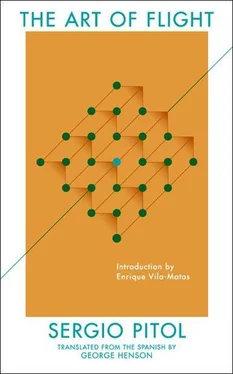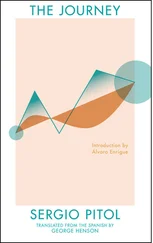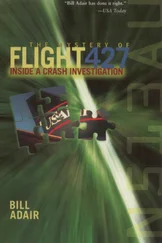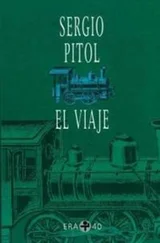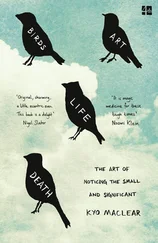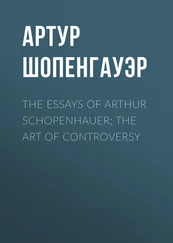Are there discernible victories in Zapatista actions? It seems to me that the strengthening of civil society is one of them. It is also important, although now less visible, to support publicly in Chiapas the problem of inequality and to demand that different sectors, including the indigenous, initiate a conversation on racism. The maturity with which this discussion is being carried out suggests that we are witnessing the beginnings of an irreversible phenomenon.
During the moments when a military solution seemed imminent, demonstrations for peace multiplied. At times the motto was, “We are all Indians.” The reaction of some journalists or broadcasters was sarcastic. To conceive of oneself as an indio ? To want to be a Tzeltal, a Ch’ol, a Tojolabal? I suppose it seemed so preposterous to them that they weren’t even aware of the deep racism that their rejection implied. I do not know if this attitude has softened. It is possible that after seeing the violent reaction of the powers that be of San Cristóbal against the indigenous population of the city, the lynch-mob mentality of the ranchers and of their guardias blancas , they will remember the King of Denmark who, during the German occupation, went out into the street wearing an armband on which was sewn a star of David, the very day it was made mandatory for the Jews to wear it outside their homes as a visible sign of belonging to a despicable race. There will be a day, I imagine, when it will not be necessary to shout that we are also Indians. I think about Chiapas and about what it might become. I think about the Indians I saw in early February 1994 detained by the dozens at military checkpoints. I think about the hunt for girls to feed brothels, about the two Indians tied to huge anthills, as a priest from San Cristóbal told me, “to teach them how to behave.” I think that all of this needs to disappear. Or is that too much to ask? Maybe so. But we must think that if it is true that we are living in cruel times, it is also true that we are in a time of wonders.
Xalapa, June 1996
Translating an author of Sergio Pitol’s stature is a humbling task. Translating his first major work into English is both humbling and terrifying. The feelings of humility and terror are compounded by the fact that Pitol, in his own right, is a celebrated translator of, among others, James, Conrad, Woolf, Austen, Graves, Chekhov, Gombrowicz, and Andrzejewski.
I discovered Pitol in graduate school, where his “Carnival” triptych (the novels El desfile del amor, Domar la divina garza , and La vida conyugal ) were required reading. Between 1996 and 2005, Pitol penned three literary memoirs, of which El arte de la fuga , translated here as The Art of Flight , was the first. Known collectively as the “Trilogy of Memory,” these three autobiographical volumes, comprised of diary entries, personal musings, travel writing, and literary essays, are reminiscent of Elias Canetti’s Memoirs .
About two years ago, Michelle Johnson of World Literature Today sent me an article written by Mexican novelist Valeria Luiselli for Granta that named Pitol a “best untranslated writer.” The article was somewhat of a misnomer as Pitol had in fact been translated into over a dozen major languages — but notably not into English. How, I wondered, was it possible that a writer of Pitol’s stature — one of four Mexican authors at the time to have won the Cervantes Prize, the most prestigious prize given to an author writing in the Spanish language — had not been translated into English? This translation is an attempt to right that wrong.
Already in the title I have failed. Failure is something that every translator must live with. But how does one fail before really starting? Like many words, the Spanish word fuga is ambiguous, meaning both fugue and flight . Ever the careful wordsmith and ironist, Pitol’s use of ambiguity in the title is intentional. Not only does the title refer to a life spent in constant flight, it is also meant to invoke, as in music, the use of the interwoven repetitive elements in his writing. Also intentional is the allusion to Bach’s Die Kunst der Fuge , known in English as The Art of the Fugue. Unfortunately, it was not possible maintain either the semantic ambiguity or the musical allusion. To the extent that I have failed, here or anywhere else in the translation, I offer a heartfelt apology.
In The Art of Flight , Pitol writes, “Translating allows one to enter fully into a work, to know its bones, its structure, its silences.” Pitol alludes here to translation as an act of reading. First and foremost, the translator is a critical reader. Through this act of critical reading, he becomes a mediator of meaning for readers in another language. While reading/translating the text, the translator discovers meaning at every level — lexical, semantic, and syntactic. And, as Pitol states, in the text’s silences. In other words, the translator must not only listen to what the writer says, but also to what he doesn’t.
Some of the features of The Art of Flight include Pitol’s at times labyrinthine prose (the opening sentence is sixty-two words long), interspersed with short parenthetical phrases that create a staccato-like rhythm, as in the following sentence: “In my case, plain and naked exposition, without flourishes, without detours, without echoes or shadows, fatally diminishes the efficiency of the story, converts it into a mere anecdote; a vulgarity, when all is said and done.”
Throughout the translation, I have striven to be faithful to Pitol’s style. To that end, and because of its potential to enrich the receptor language and culture, I have adopted a foreignizing strategy. Foreignization goes beyond leaving occasional words in the target language, especially those words that are already familiar to the reader. Doing so would render the translation a parody or, to borrow one of Pitol’s favorite words, a vulgarity. The translator, then, must listen for the words that call out to remain untranslated, words that express concepts that are either foreign to, or by their use will enrich, the receptor language and culture, words like capillas (Mexico’s literary coteries), coletos (white elites), (paramilitary) guardias blancas , and tertulia (the uniquely Spanish version of the salon ). As noted, these loanwords appear in italics and have been explicated as naturally as possible and to the extent necessary to give them meaning.
Foreignization may also occur at the syntactic level, that is, so that the syntactic features present in the source language remain intact in the translation. To that end, I have attempted to intervene as little as possible in Pitol’s syntax. At the lexical level, in most cases, I have chosen Latinate and Greek cognates rather than Anglo-Germanic synonyms. In doing so, I endeavored to honor Pitol’s style and vocabulary, both of which tend toward the baroque, an effect I strove to retain or, at least, echo in the translation At times, however, it was necessary to change Pitol’s punctuation, especially colons and semicolons, which he uses generously, and at times completely contrary to American usage. In some cases, but few, laboriously long and subordinated sentences either had to be broken up or the clauses reordered lest the reader become lost in a maze of subordination.
Because The Art of Flight is a multigeneric text, written in multiple voices, styles, and literary forms, over a period of three decades, it was important to not resort to a single, unifying voice. In the case of the numerous quotations, translated from a variety of languages into Spanish, I chose to incorporate, where available, existing English translations. For the sake of consistency, I have also used extant English translations for quotations of Spanish texts, many of which are considered canonical and will be familiar to English readers.
Читать дальше
